Skywalker X5 Drone CFD Simulation, ANSYS Fluent
$100.00 Student Discount
- The problem numerically simulates a Skywalker X5 UAV using ANSYS Fluent software.
- We design the 3-D model with the Design Modeler software.
- We mesh the model with ANSYS Meshing software. The element number equals 1,195,030 and their type is polyhedra.
- Multiple Reference Frames (Frame Motion) are used to model the rotational motion of the propeller.
To Order Your Project or benefit from a CFD consultation, contact our experts via email ([email protected]), online support tab, or WhatsApp at +44 7443 197273.
There are some Free Products to check our service quality.
If you want the training video in another language instead of English, ask it via [email protected] after you buy the product.
Description
Skywalker X5 UAV Aerodynamic CFD Simulation, ANSYS Fluent Training
Introduction
The Skywalker X5 is a small, fixed-wing UAV for use in surveillance, aerial inspection, and surveying tasks. It has a high-quality mapping camera, a hand or catapult lunached, can fly missions independently, and lands with a parachute.
The X5 is a fantastic-looking FPV with a sensible cabin configuration that can accommodate more extensive electric systems. It has a wide range of professional applications and can be incorporated into new industries.
In this simulation, a Skywalker X5 UAV with one propeller rotating around the horizontal axis is modeled using ANSYS Fluent software. The device is moving at a speed of 60 km/h.
The geometry of the present model is three-dimensional and has been designed using Design Modeler software. We do the meshing of the present model with ANSYS Meshing software. The mesh type is Polyhedra, and the element number is 1,195,030.
Methodology: Skywalker X5 UAV CFD Simulation
The Multiple Reference Frames (MRF) method is used to model the rotational motion of the propeller.
Conclusion
After the simulation process was finished, contours and vectors for parameters such as velocity, pressure and turbulent intensity were obtained. As shown in the velocity contours, the vortexes behind the propeller are visible where the turbulent intensity parameter is high.
Compared to other UAVs, this model endures less amount of drag force. One of the reasons for this is the absence of any part of the UAV behind the vortexes because these vortexes increase the amount of drag by hitting any part significantly.
In the static pressure parameter case, as it was predictable, the UAV’s front surfaces endure the highest pressure. The maximum static pressure is applied to the propellers’ edges, which tells us about the necessity of the manufacturing focus on this component.
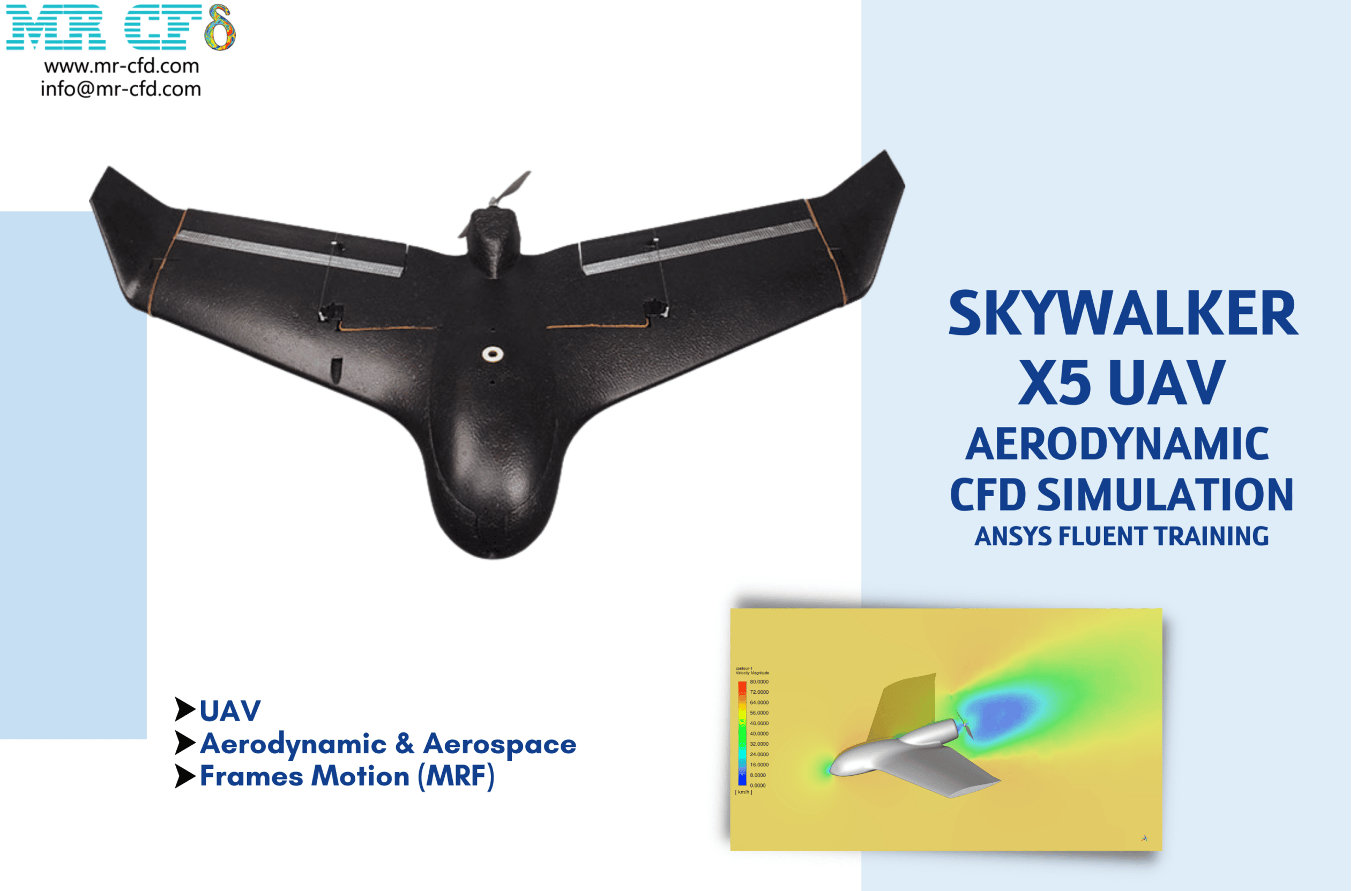
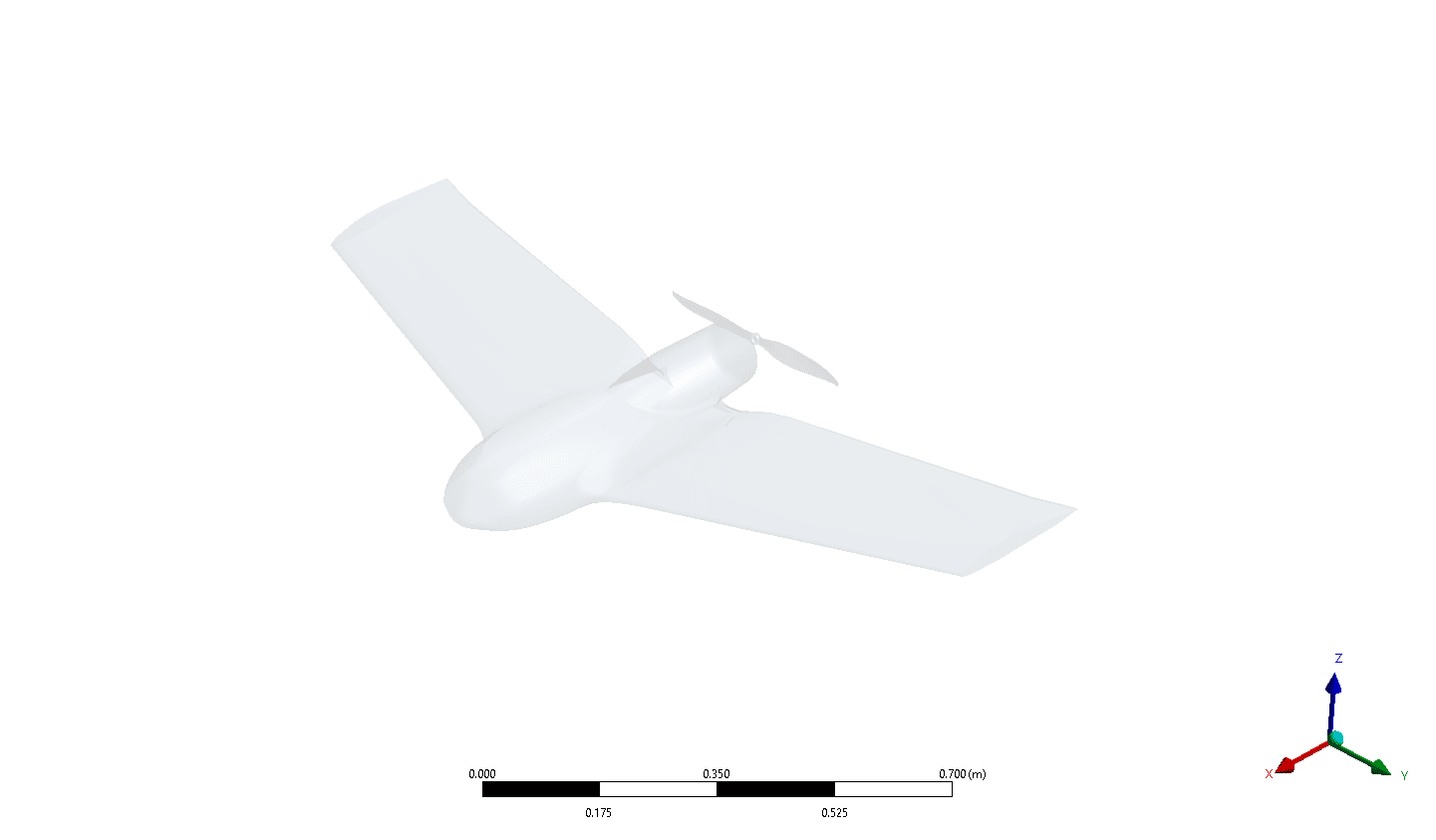
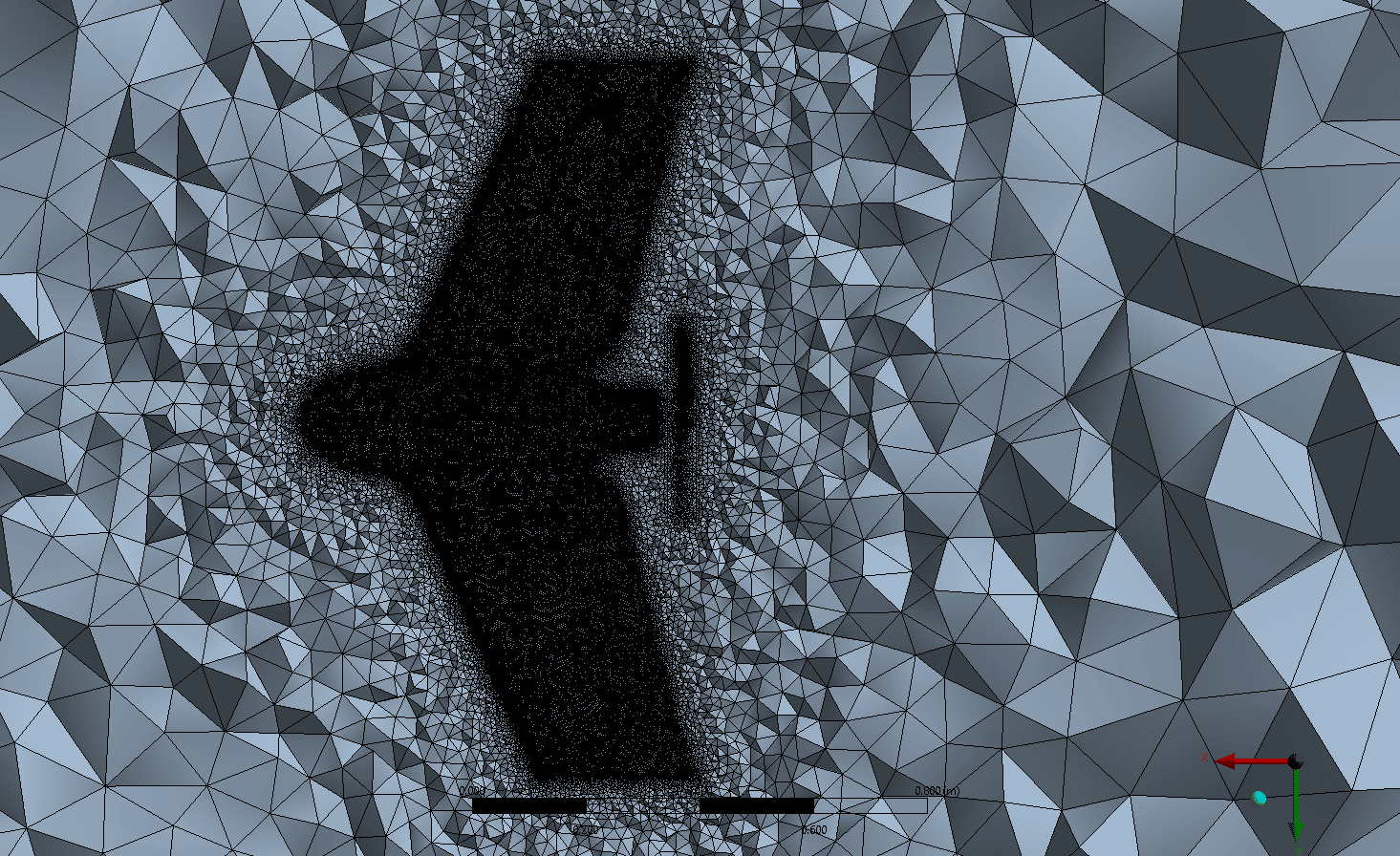
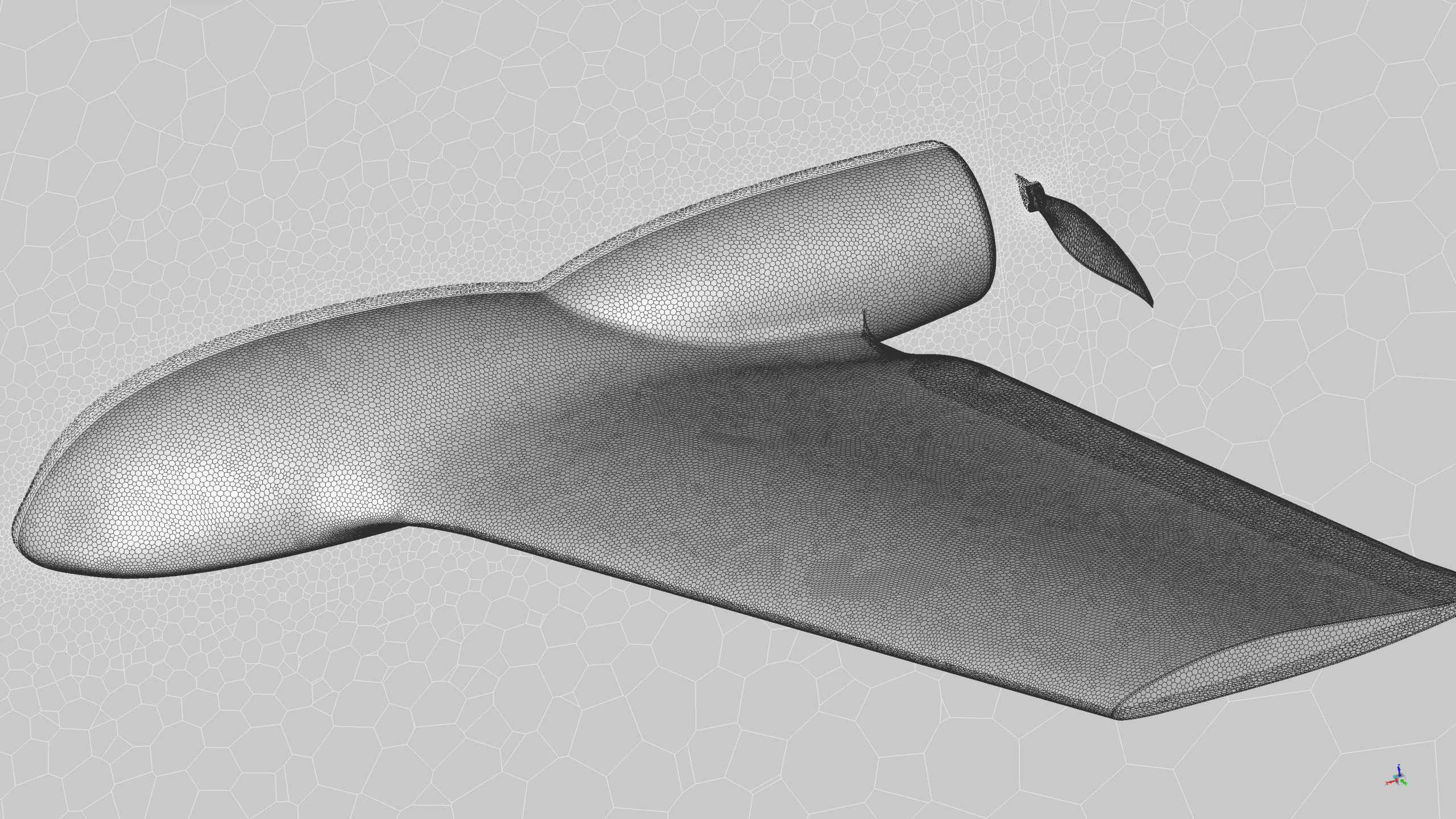
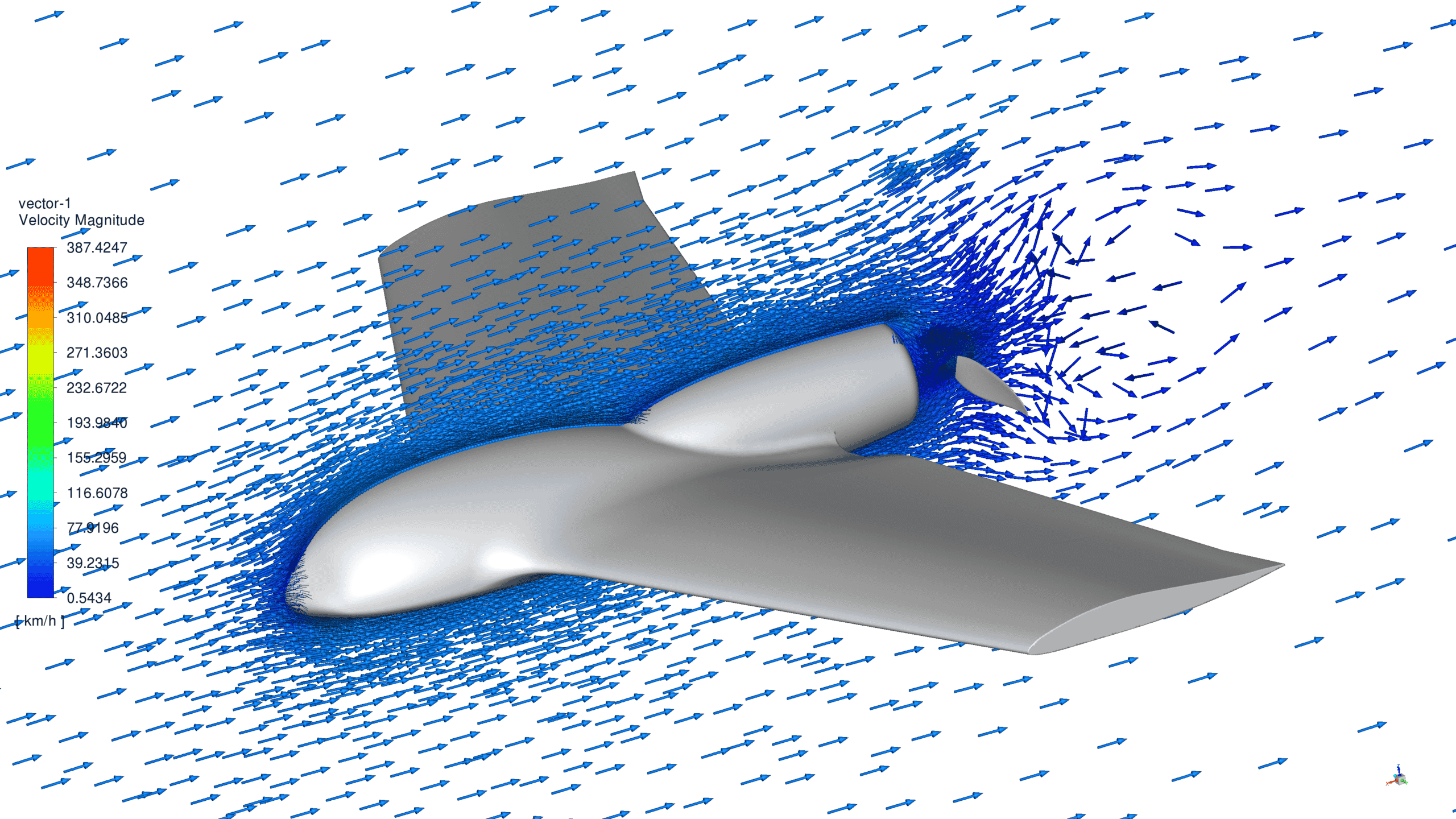
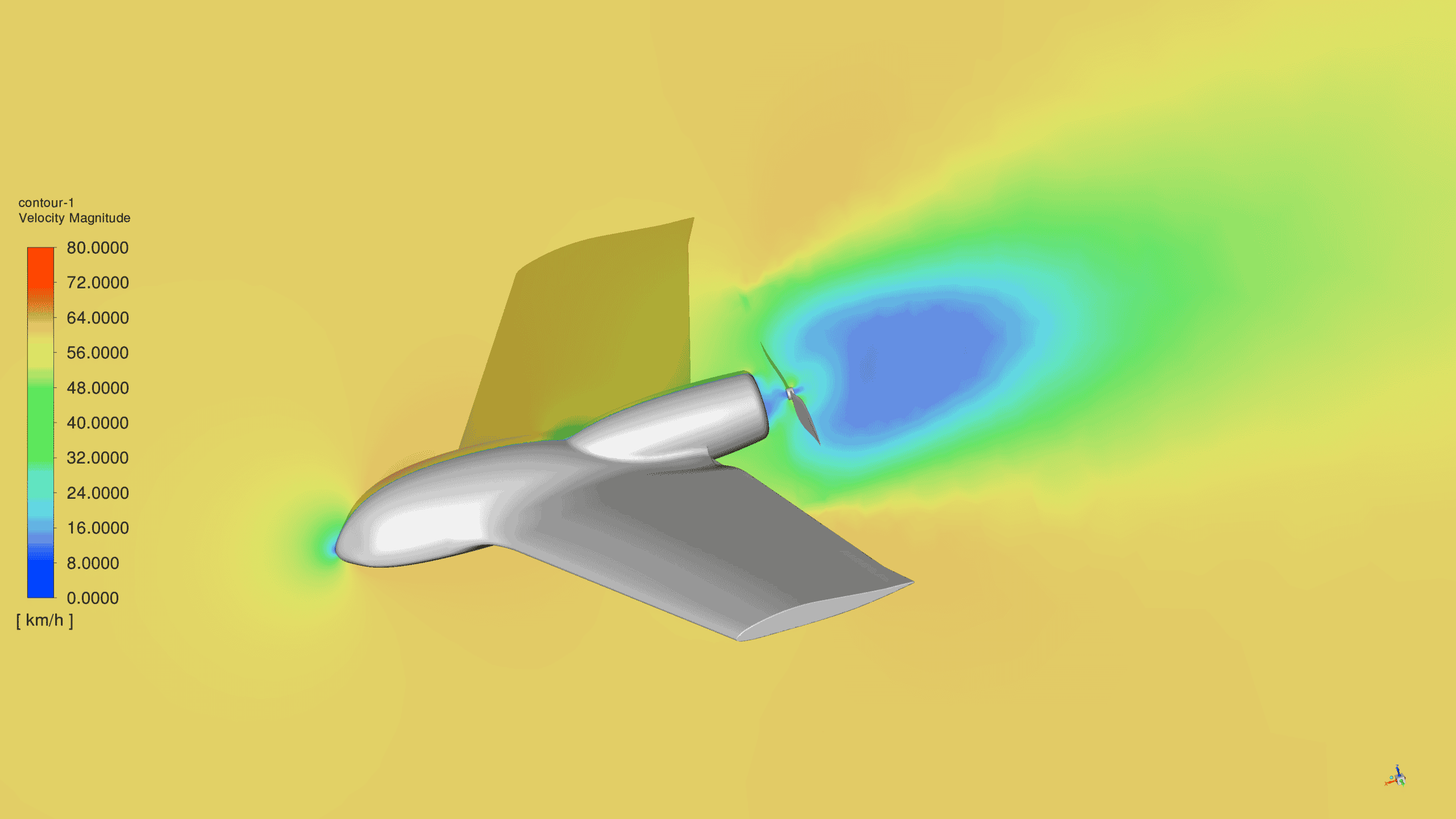

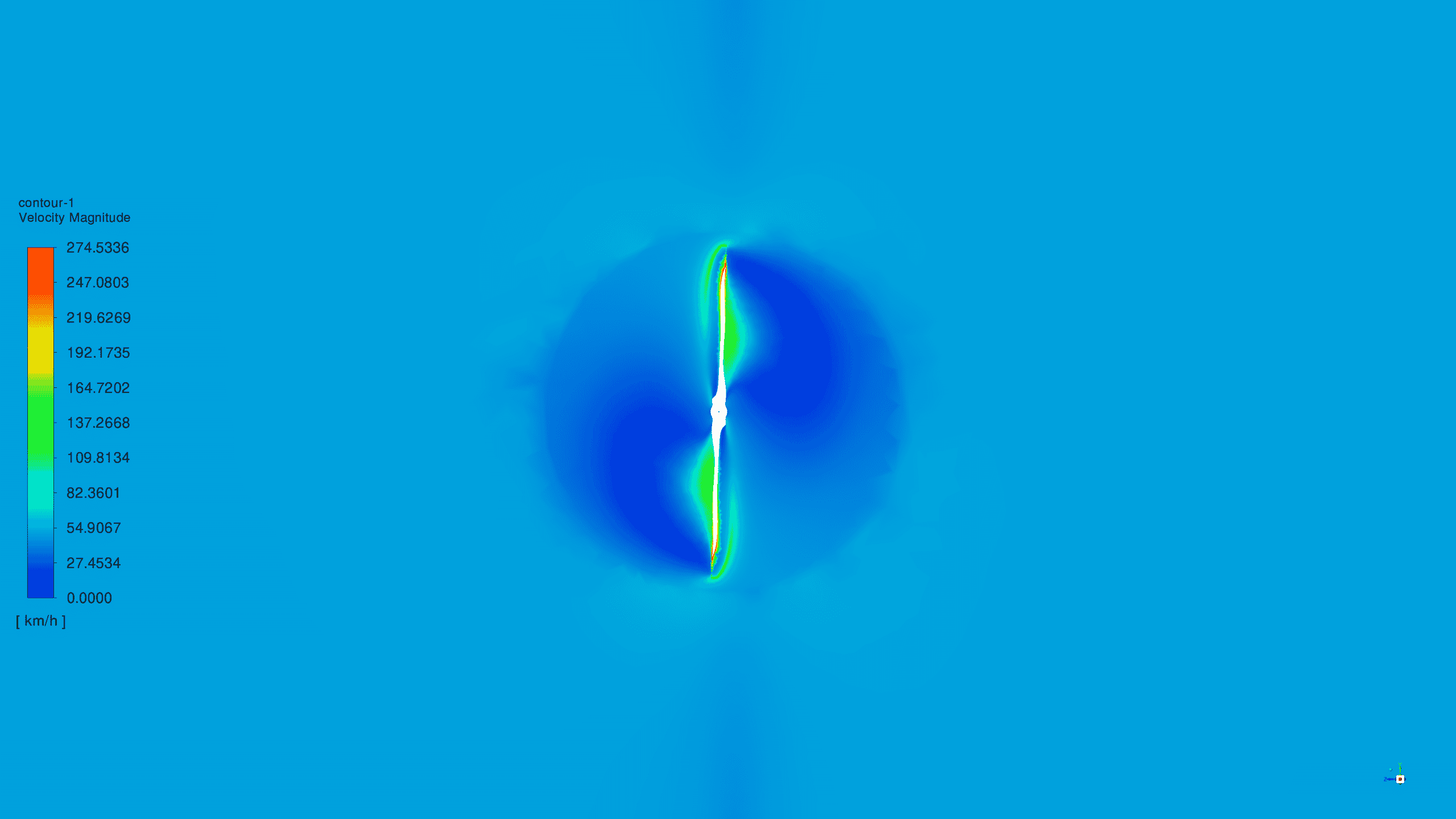
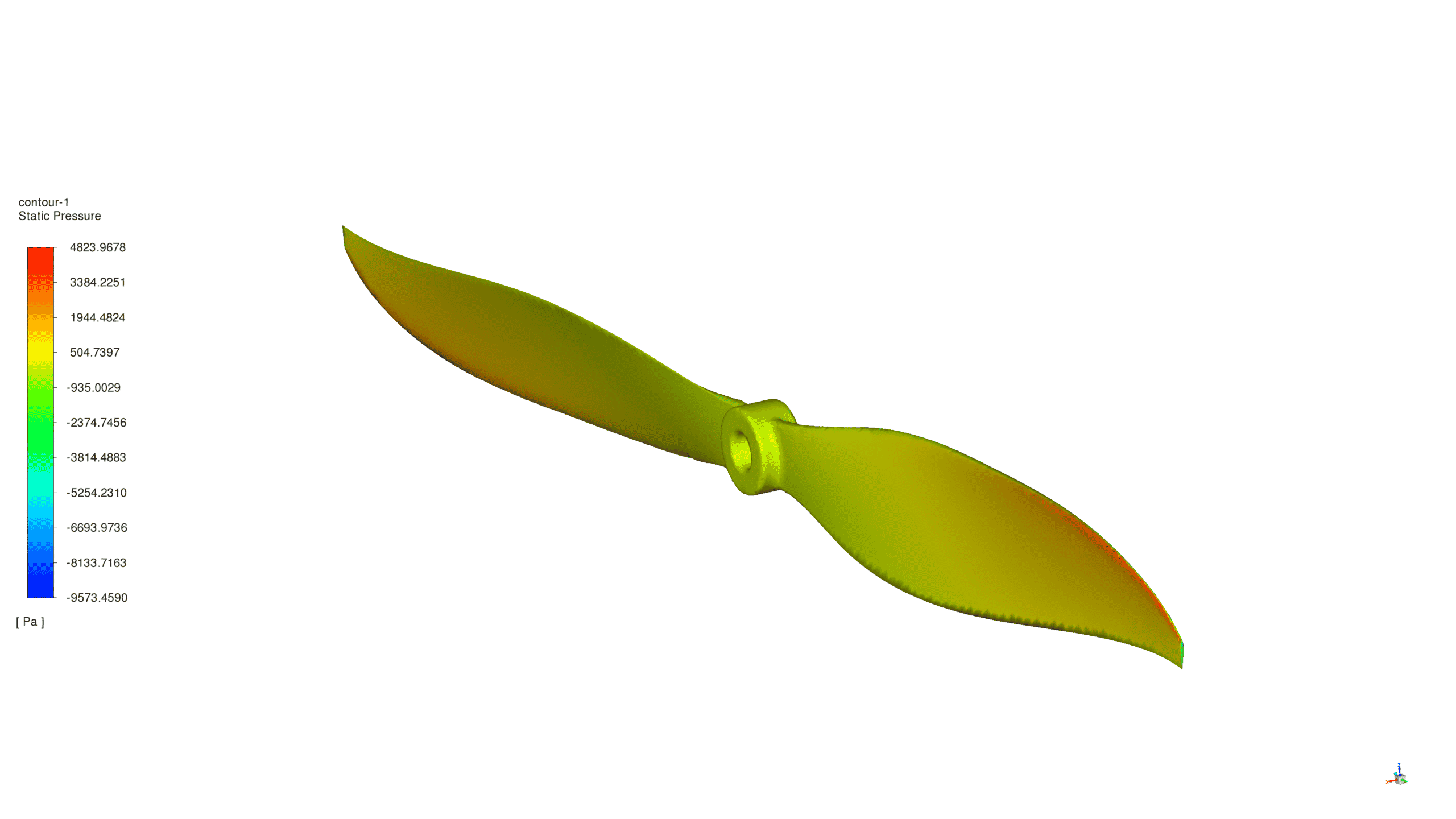
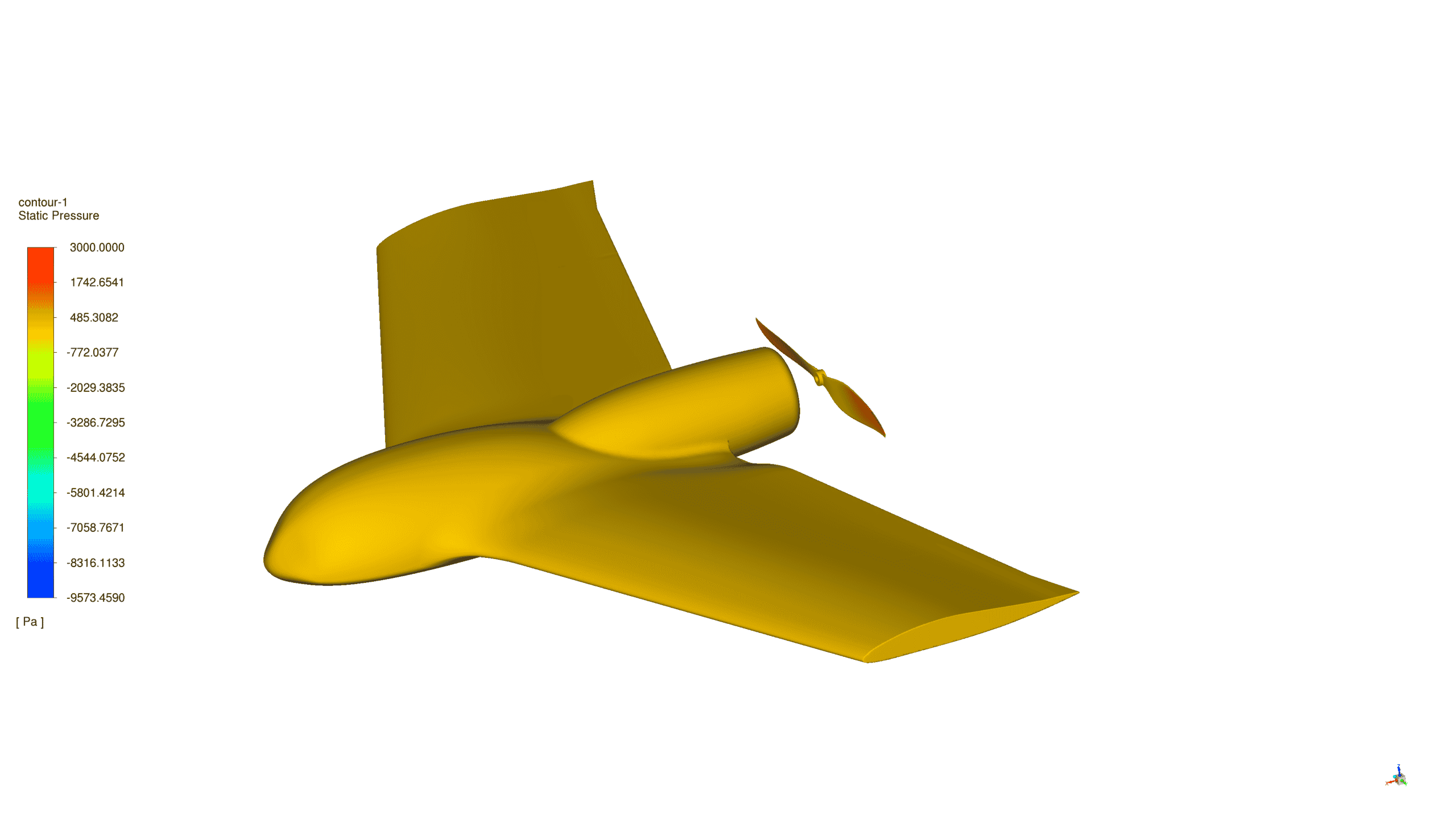
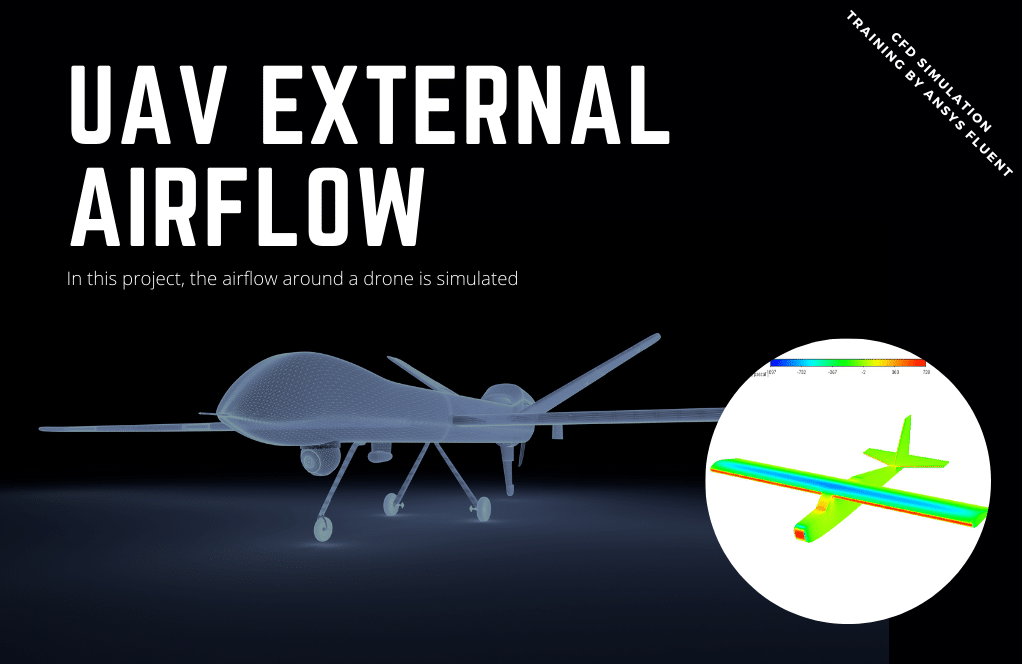
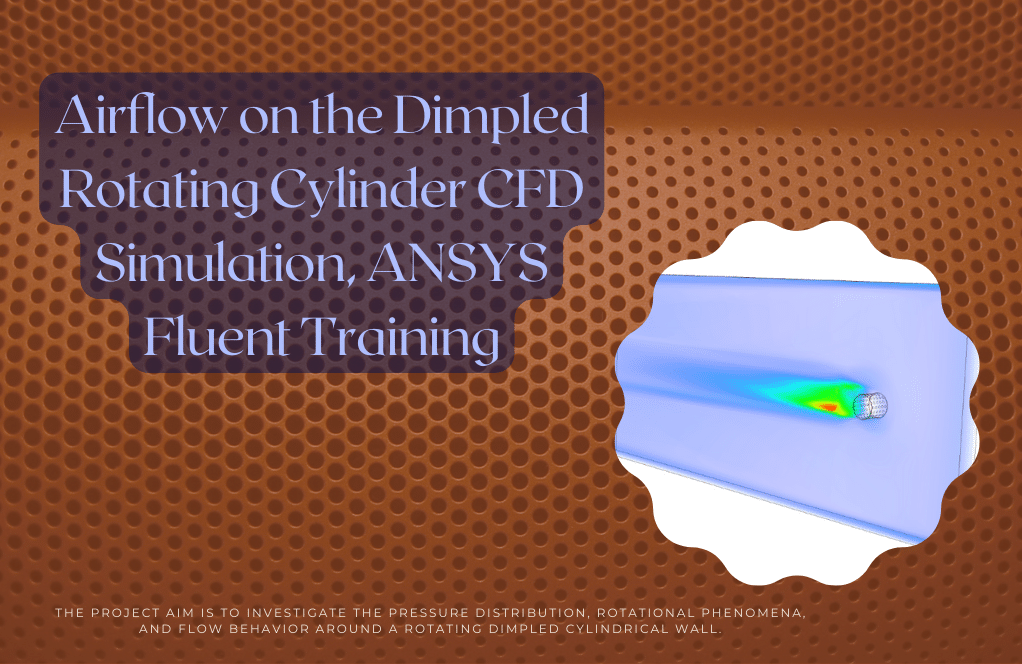
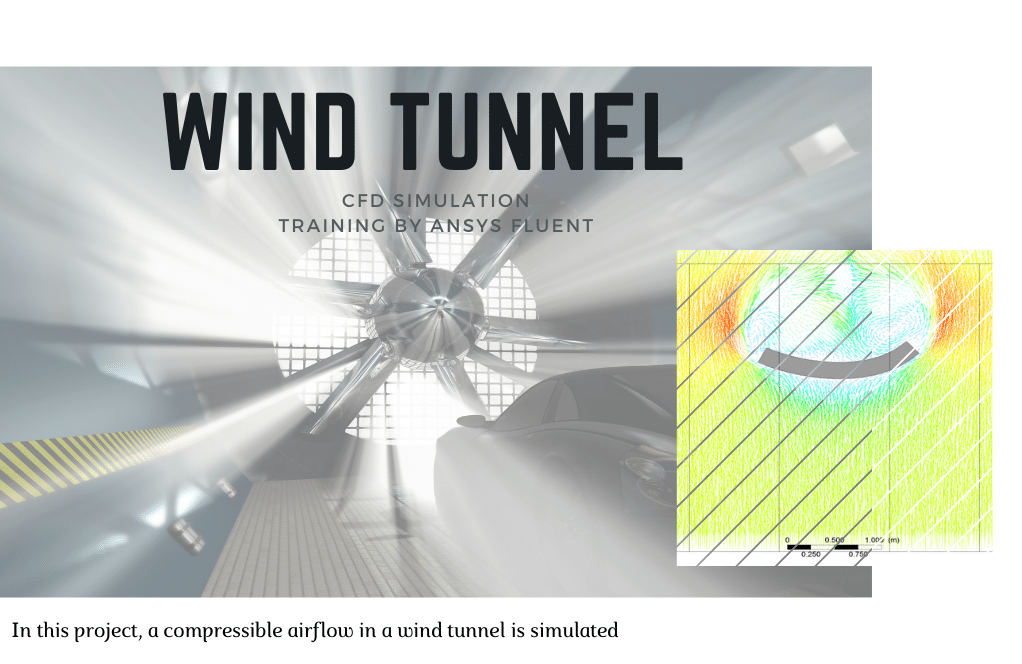
Erica Windler –
I recently completed the Skywalker X5 UAV CFD simulation course using ANSYS Fluent, and I was impressed by the comprehensive nature of the training! The in-depth explanations and hands-on approach gave me a profound understanding of drone aerodynamics. I’m confident in applying these skills to my future projects.
MR CFD Support –
Thank you so much for your kind words! We’re thrilled to hear that you found the Skywalker X5 UAV CFD simulation course comprehensive and beneficial. It’s great to know that it has helped increase your confidence in drone aerodynamics. If you have any more feedback or need further assistance, just let us know!
Garett Spencer Sr. –
I am thrilled with the details of the Skywalker X5 Drone CFD Simulation! The insights into the propeller’s role and how it affects the drone’s aerodynamics were particularly useful for my project. The contour visuals helped a lot. Keep up the fantastic work!
MR CFD Support –
Thank you for your kind words! We’re delighted to hear that the Skywalker X5 Drone CFD Simulation provided valuable insights for your project. Our goal is to deliver accurate and visual simulations to help our clients understand complex aerodynamics. It’s always great to see our work being appreciated and utilized effectively. If you have any more questions or need further assistance, feel free to reach out to us!
Prof. Jennings Keebler –
The simulation of the Skywalker X5 drone was clear and quite in-depth. It sounds like a thorough analysis was performed and I appreciate the details on why this particular drone model endures less drag force. The fact that emphasis is put on the propeller design is really insightful for understanding overall drone performance.
MR CFD Support –
We are delighted to hear that you found the CFD simulation analysis of the Skywalker X5 drone informative and satisfactory. It’s always our aim to provide clear and comprehensive insights into performance factors such as drag force. Thank you for your positive feedback!
Antone Toy –
This UAV simulation looks impressive. This should be incredibly useful for aerospace engineering students and UAV designers!
MR CFD Support –
We appreciate your positive feedback! It’s great to hear that our Skywalker X5 UAV Aerodynamic CFD simulation can be a valuable tool for both students and professionals in the field. Thank you for highlighting its utility in enhancing design and educational processes.
Aiden Bauch –
The insights gained from the CFD simulation are fascinating. I’m particularly impressed with how the Skywalker X5 UAV’s design minimizes drag and handles turbulent intensity well. Great job on presenting clear and informative results!
MR CFD Support –
Thank you for your kind words! We are delighted to hear that you found the Skywalker X5 UAV simulation results helpful and informative. We strive to provide clear insights into UAV aerodynamics to help improve design and performance. Your feedback is greatly appreciated!
Dominic Rolfson –
I was amazed to see the absolute beauty of the Skywalker X5 Drone simulations! The vortex patterns depicted and reduced drag element are not just technically impressive, but visually striking as well. Kudos on such detailed work!
MR CFD Support –
We’re thrilled to hear that you appreciate the detailed simulation work of the Skywalker X5 Drone using ANSYS Fluent. Our team works meticulously to ensure accuracy and visual clarity in our simulations, so they are both informative and engaging. Thank you for your positive feedback!
Miss Florida Konopelski DDS –
I was amazed by how the Skywalker X5 Drone simulation visualizes the effects of drag forces on UAV design. Can you offer me any pointers on improving UAV designs based on the simulation results to further reduce the drag?
MR CFD Support –
Dear customer, thank you for your review and interest in our simulation products! While the MR CFD Company doesn’t directly offer UAV design services, the insights from the Skywalker X5 Drone simulation can help you understand areas that might help reduce drag. For instance, considering streamlined shapes and minimizing protruding elements could be key factors. Additionally, the position and design of components such as propellers and landing gears can impact the airflow and consequently the drag force. It’s always advisable to consult with an aerodynamics expert for specific design enhancements.
Santiago Beatty V –
The approach with using MRF to simulate the rotational motion of the propeller seems effective. Have any comparisons been made with alternative methods for capturing rotating motion, such as the Sliding Mesh technique?
MR CFD Support –
Thank you for your thoughtful question! While the MRF method is used in this simulation for its simplicity and speed, the Sliding Mesh technique can offer a more accurate representation of transient phenomena and the interaction between the rotating and static zones. However, it is also more computationally expensive. In our training material, we focus on the MRF method due to its wide range of applications and suitability for steady-state simulations, which fits the context of our Skywalker X5 Drone CFD Analysis.
Leopold Carter –
I’m deeply fascinated by the aerodynamic features of the Skywalker X5 Drone, based on your analysis it seems to perform very well! The balance between drag reduction and structural integrity appears to be very well-managed. Can you elaborate on how the UAV’s design contributes to its superior aerodynamic profile?
MR CFD Support –
Thank you for your kind words and interest in the Skywalker X5 Drone’s aerodynamics. The design of the UAV contributes to its excellent aerodynamic profile by employing a smooth, streamlined body that minimizes resistance and turbulence during flight. Additionally, the careful placement of components such as the propellers and the mapping camera ensures that these potential sources of drag are integrated in a way that aligns with the airflow, further reducing the drag quotient. Every aspect of the UAV’s structure, from the wing shape to the tail configuration, is optimized for better flow dynamics, allowing the Skywalker X5 to achieve less drag compared to other UAV models.
Jaime Hauck –
I’ve always been curious about UAV aerodynamics. Could you shed some light on how the static pressure variations on the UAV propellers affect its flight stability?
MR CFD Support –
The variations in static pressure on the propellers play a crucial role in the UAV’s flight stability. When a propeller rotates, the higher static pressure at the edges demonstrates the differential between the leading and trailing edges, which translates to lift generation critical for the UAV’s ability to maintain flight. Manufacturers need to focus on the propeller design to ensure that it can withstand these pressure differences without deforming. This ensures both the efficiency and stability of the UAV during flight operations.
Prof. Juliet Wilkinson –
I’m really impressed with the Skywalker X5 Drone CFD Simulation in ANSYS Fluent. The attention to detail in terms of both the geometry and the analysis provided me with such valuable insights, especially understanding how vortexes can affect drag force. The use of Polyhedra meshing seems to have been a great choice for accuracy.
MR CFD Support –
Thank you for your positive feedback on the Skywalker X5 Drone CFD Simulation! We are delighted to hear that you found the detailed geometry and analysis beneficial. We always strive to provide accurate simulations using the best techniques like Polyhedra meshing to ensure our customers gain valuable insights. Your recognition of how vortexes influence drag force shows your deep understanding of the aerodynamic concepts, which is fantastic. If you have any further inquiries or need support with our other simulation products, feel free to reach out.
Jazmin Klocko –
The Skywalker X5 UAV CFD simulation seems quite detailed. Did the analysis also examine potential stress points on the propellers due to pressure variations?
MR CFD Support –
In this particular simulation, the primary focus was on aerodynamic parameters such as velocity, pressure, and turbulent intensity. While the maximum static pressure is mentioned to occur at the propeller edges, which is critical for design considerations, the training does not explicitly state that structural stress or fatigue analysis was explored. However, these aspects would be vital in practical applications for ensuring the durability and safety of the UAV.